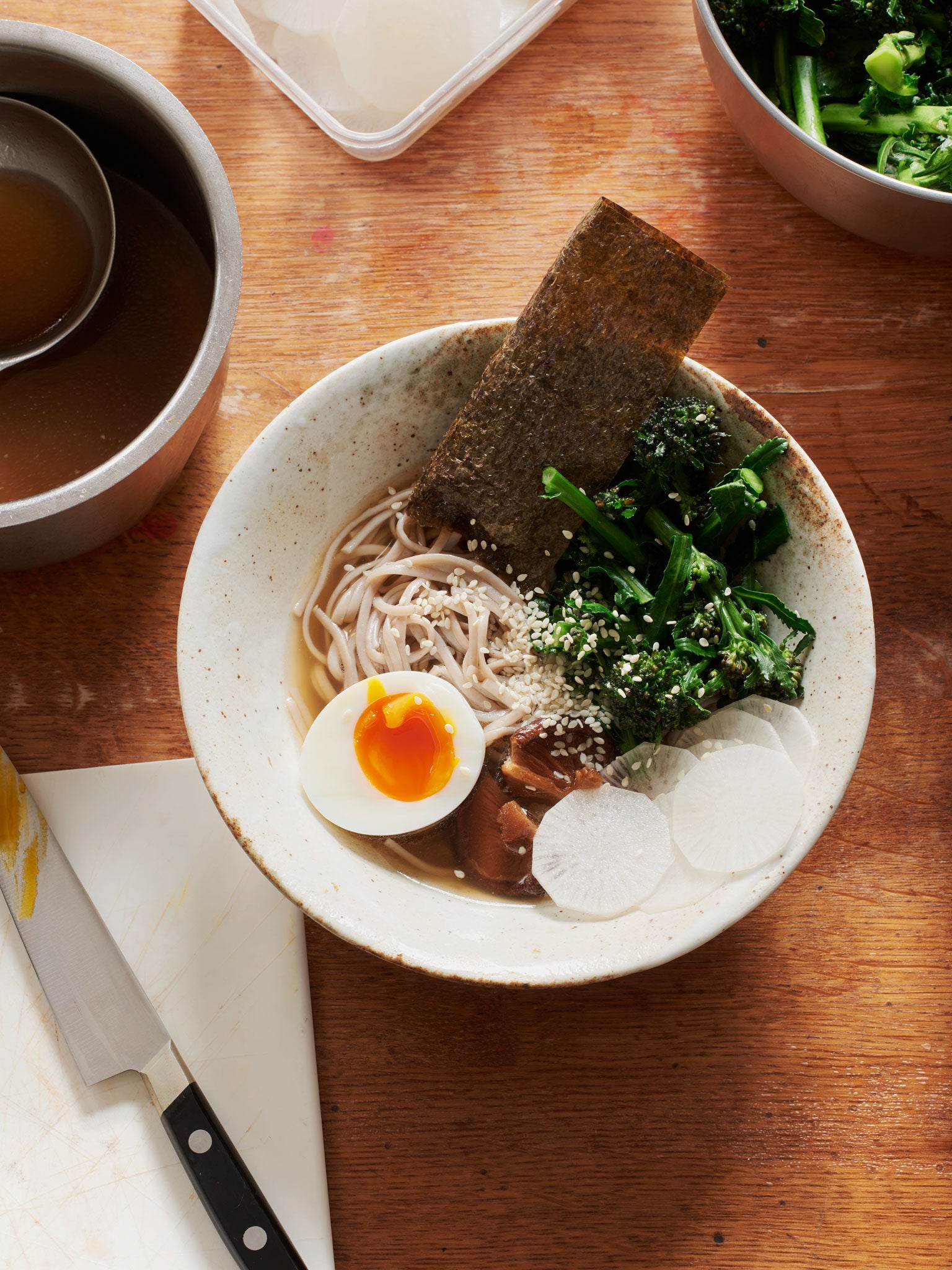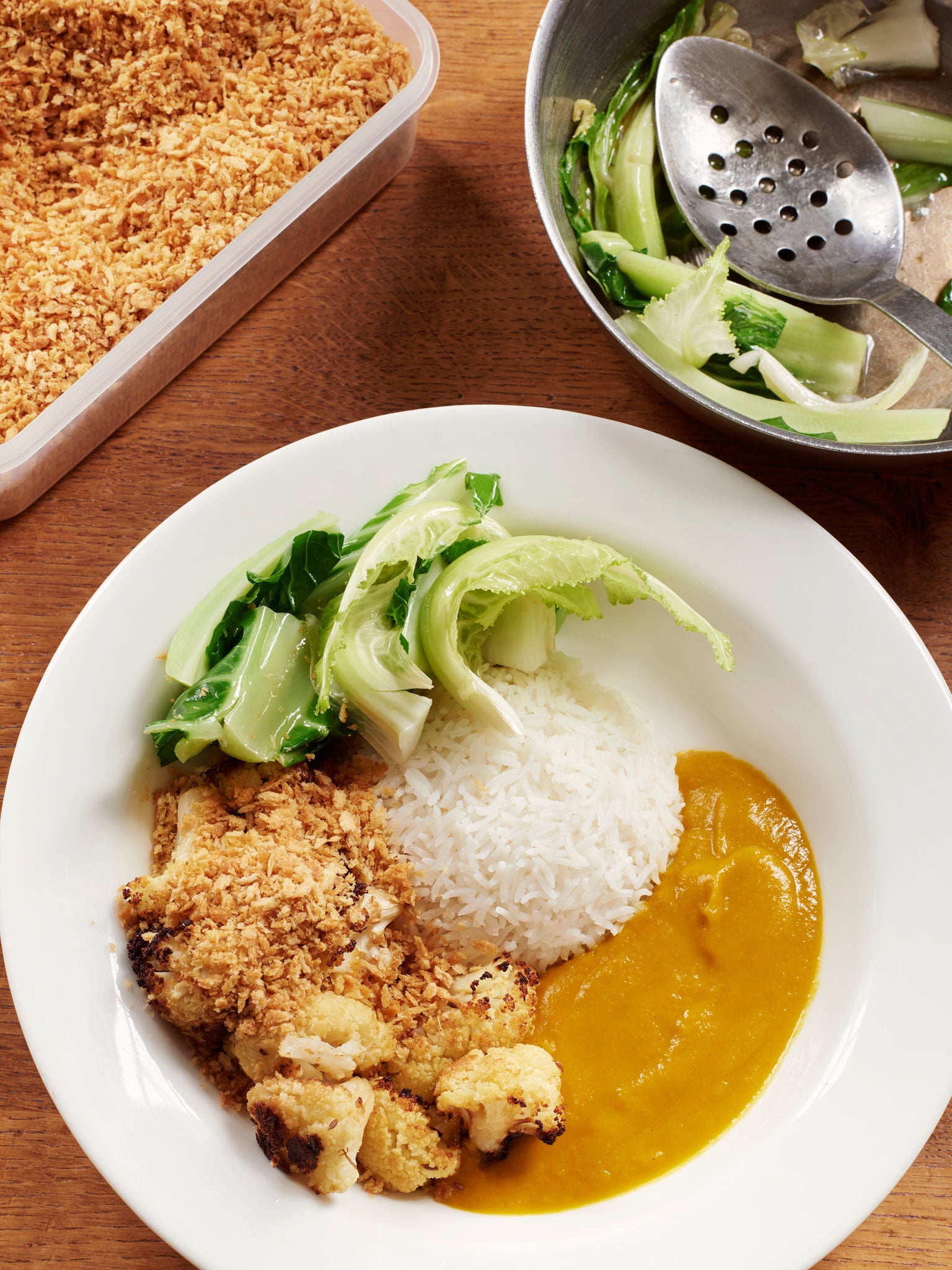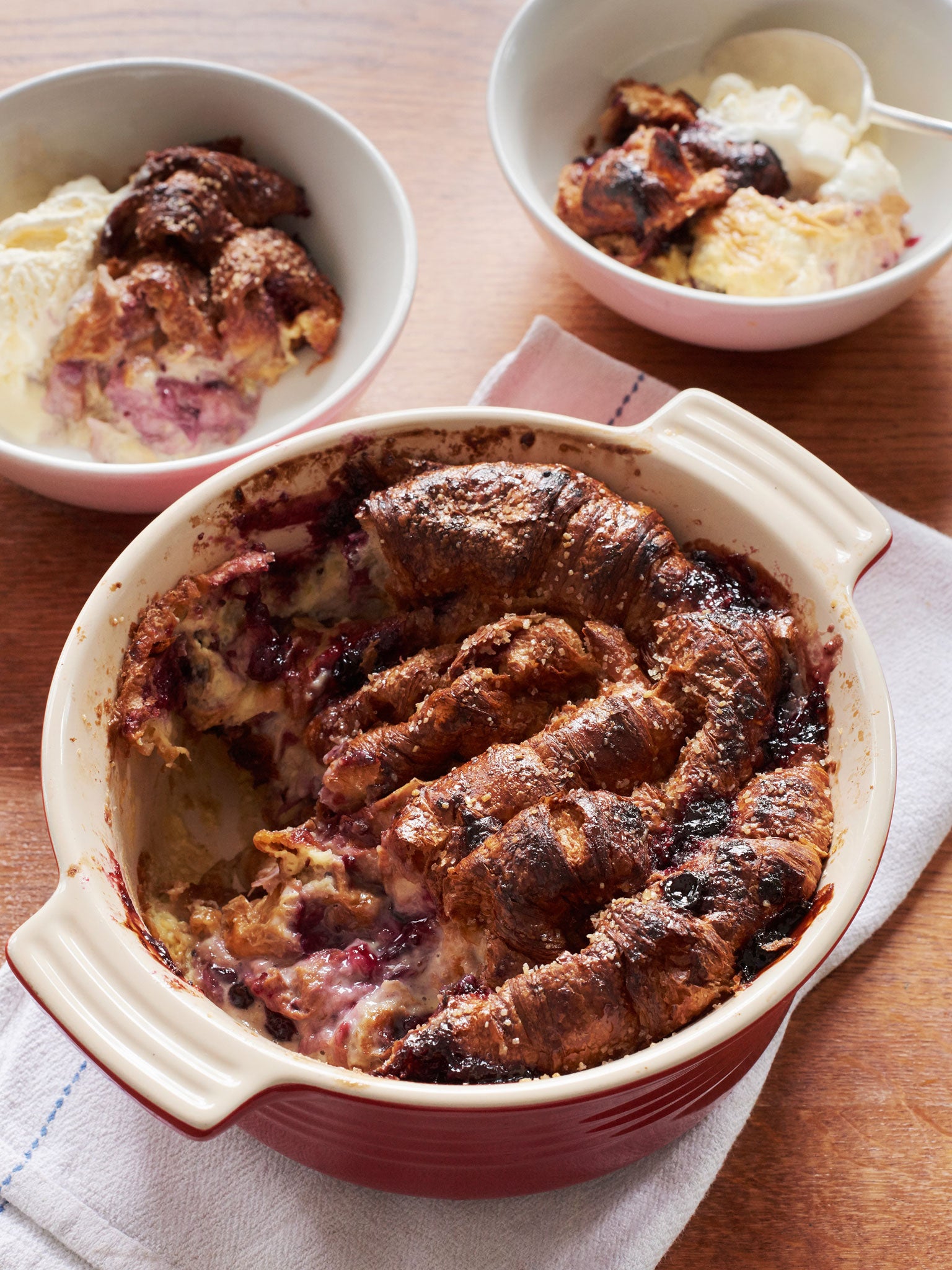Your support helps us to tell the story
From reproductive rights to climate change to Big Tech, The Independent is on the ground when the story is developing. Whether it's investigating the financials of Elon Musk's pro-Trump PAC or producing our latest documentary, 'The A Word', which shines a light on the American women fighting for reproductive rights, we know how important it is to parse out the facts from the messaging.
At such a critical moment in US history, we need reporters on the ground. Your donation allows us to keep sending journalists to speak to both sides of the story.
The Independent is trusted by Americans across the entire political spectrum. And unlike many other quality news outlets, we choose not to lock Americans out of our reporting and analysis with paywalls. We believe quality journalism should be available to everyone, paid for by those who can afford it.
Your support makes all the difference.You can tell from a restaurant's food whether the people cooking and serving it are happy. There is an unquantifiable but definite quality to it – often labelled as having been “made with love”. I'm fairly certain that places exuding warmth eat well themselves; a league table of “staff food”, judged at 5pm each night, would be as useful as any restaurant guide currently available.
On chatting to Gina Hopkins, head chef at Islington's excellent Drapers Arms, it's clear there are numerous facets to a good staff meal. It should be nourishing and sustaining, but thrifty and quick to put together by a team member without disrupting their other tasks.
Often (and this is my experience, too), the cuisine contrasts with the one the chefs have to cook day in, day out: think leftovers flush with Asian spicing, vegetable curries, pasta bakes.
Sometimes it's a way of ensuring trial dishes that might end up on the menu don't go to waste; though no one would deny that takeaway pizzas and burgers often bring the biggest cheer.
Basically, staff food is family food, and I hope the recipes here will be as welcome on your kitchen table as they would be for a group of flagging chefs and front-of-house staff staring down the barrel of a hectic service.
The noodle dish is best with stock made from a previous roast, but in all other respects is quick and cheap to put together. I love the crunch of the breadcrumbs that go with the cauliflower and curry sauce; make sure you keep hold of and cook the green leaves from your cauli – they're the tastiest food freebie you can find. And while I don't expect you to have eight croissants just lying around as leftovers, the jam croissant pudding is quick, easy and seriously gratifying.
Ed Smith is the author of the food journal RocketandSquash.com.
He was shortlisted as Best Cookery Writer and winner of Best Online Restaurant Writer at the 2015 Fortnum & Mason Food and Drink awards
Stockpot soba noodles
I love the flavour of buckwheat soba noodles. If you have stock already, this can be an easy dish made from store-cupboard ingredients. Feel free to use whatever green and crunchy vegetables are to hand.
Preparation and cooking time: 20-30 mins
Serves 4
1.2 litres good chicken stock
1 clove garlic, thinly sliced
4 dried shiitake mushrooms
3cm fresh ginger, peeled and finely sliced
5 tbsp light soy sauce
4 tbsp mirin
360g buckwheat soba noodles
2 tbsp sesame oil
250g purple sprouting broccoli (or any leftover seasonal greens)
8cm mooli (a type of radish)
Pinch salt
2 quality eggs (fridge-cold)
4 nori squares
4 tsp sesame seeds

Put the stock, garlic, shiitake, ginger, soy and mirin in a saucepan and gently simmer for 20 minutes while you prepare the rest of the meal.
Blanch the noodles in boiling water for 90 seconds. Drain and run under cold water. Put in a bowl, lubricating with the sesame oil.
Trim the purple sprouting just below the florets, then into 4cm to 5cm lengths. Blanch in boiling water for 3 minutes, drain and run under cold water. Peel and slice the mooli very thinly, ideally with a Japanese mandoline. Place in a small bowl. Sprinkle with a little salt and allow to soften.
Place the eggs in a pan of rapidly boiling water and leave for 6½ minutes. Once done, immediately drop the eggs in a bowl of iced water. Allow to cool. Carefully peel (still under water) and leave the eggs until needed, slicing in half at the last minute.
To serve, divide the noodles between four bowls, placing the greens and shiitake on top. Ladle over the hot stock and garnish with half an egg each, mooli slices, nori and sesame seeds.
Katsu cauliflower curry
Roast cauliflower is very “now”. But it's better than a fad and, to my mind, a worthy focal point. Crunchy bread crumbs and a sweet curried sauce provide the “katsu” theme.
Preparation and cooking time: 60-80 mins
Serves 4
5 tbsp extra-virgin rapeseed oil
60g panko breadcrumbs
1kg cauliflower (keep the green leaves)
1 tsp coarse sea salt
2 tbsp cumin seeds
50g butter
1 medium onion, diced
1 stick celery, roughly chopped
2cm fresh ginger, peeled and roughly chopped
Pinch salt
1 clove garlic, minced
350g carrots, peeled and roughly chopped
4 tsp curry powder
500ml chicken or vegetable stock
Juice ¼ lemon
2 tbsp sesame oil
2 tbsp mirin
2 tbsp rice-wine vinegar
To serve
Plain rice

Heat your oven to 200C. Drizzle 2 tbsp of rapeseed oil on to a shallow baking tray. Sprinkle the breadcrumbs on top then mix well. Shake to level out, then put in the top of the oven for 4 to 8 minutes, until golden-brown. Tip into a container for later.
Turn the oven down to 190C.
Break the cauliflower into florets and put these in a roasting tray. Sprinkle the salt over, add the remaining rapeseed oil and mix. Put the tray in the middle of your oven and roast for 50 minutes, gently turning the florets after 30 minutes and sprinkling the cumin seeds over the top at the same time.
Meanwhile, make the curry sauce. Put 30g of butter in a large saucepan on a medium heat and soften the onion, celery and ginger with a pinch of salt.
After 3 to 4 minutes, add the garlic and cook for 1 minute more, before throwing in the carrots and curry powder. Pour in the stock, bring to the boil and simmer for 20 minutes until the carrots are soft. Tip the vegetables and liquid into a blender, add the remaining butter and blitz for 3 minutes until you have a velvety smooth sauce. Season with salt and lemon juice.
Serve the nutty brown, roasted cauliflower topped with handfuls of golden crumbs, a couple of ladles of curry sauce on the side, and loads of plain rice.
Don't waste the cauliflower greens. Cut the stems of the large leaves in half lengthways and blanch in rapidly boiling water for 1 minute. Drain and dress with a tbsp or two each of sesame oil, mirin and rice-wine vinegar. Serve alongside.

Jam and croissant pudding
There's nothing new about a croissant butter pudding. But I'm always surprised that ingredients such as chocolate, raisins, marmalade or bananas are added, when actually the best match for a croissant is jam – ideally blackcurrant. The custard is relatively low in sugar, as both the croissants and jam provide plenty of sweetness. This is best when served with vanilla ice cream.
Preparation time: 10 mins
Cooking time: 30 mins
Serves 6-8, depending how sweet-toothed you are
300ml double cream
500ml whole milk
6 egg yolks
40g golden caster sugar
8 all-butter croissants (better a day or two old)
250g blackcurrant jam
1 tbsp demerara sugar

Preheat the oven to 200C.
Put the cream and milk in a thick-bottomed saucepan and place on a medium heat. Turn the heat off just as it's coming to a boil. Put the egg yolks and sugar in a large bowl and whisk vigorously for about 2 minutes so the mix becomes light, doubles in size and your elbow aches. Add the warm milk to this in 4 to 5 stages, just a little to begin with (to avoid scrambling the yolks).
Slice the croissants in half. Spread each cut surface with jam and tightly pack the bottoms in an earthenware or Pyrex dish – layering in a small but deep dish is good. Place the remaining croissant pieces on top. Dot any scrapings of jam in the gaps. Pour the custard over the top and leave for 20 to 30 minutes; the croissants will soak much of it up.
Sprinkle with a little demerara sugar and bake in the middle of the oven for about 25 minutes, until the cooked custard has inflated the croissants and the top is browned and crisp. Let it rest for 5 to 10 minutes before serving – the custard will set further during that time.

Join our commenting forum
Join thought-provoking conversations, follow other Independent readers and see their replies
Comments